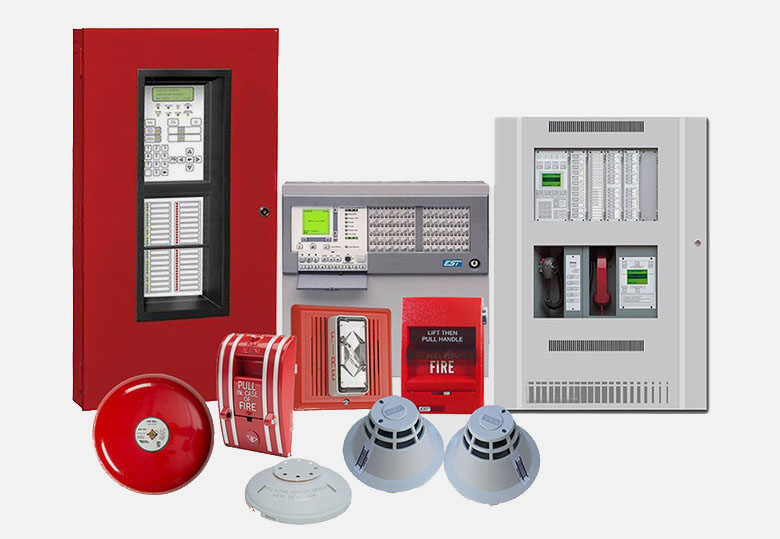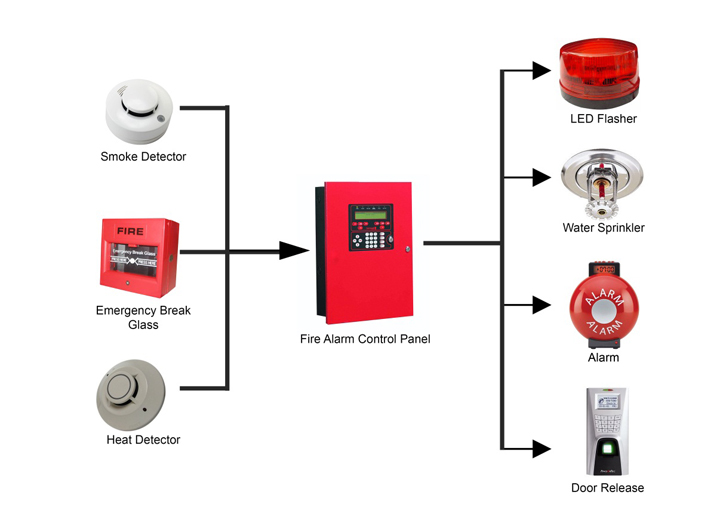The Fire Alarm System serves as a critical component in the early detection and notification of fire incidents, playing a pivotal role in ensuring the safety of lives and property. At We OonTrack, we specialize in offering comprehensive solutions, including supply, installation, testing, Annual Maintenance Contract (AMC), and training for Fire Alarm Systems across India. Understanding the types of systems, their key components, and the sectors that benefit most from their installation is essential for implementing effective fire safety measures.

1. Conventional Fire Alarm Systems: These systems divide a building into zones, with each zone having multiple devices connected to a single circuit. Conventional systems are cost-effective and suitable for smaller applications.
2. Addressable Fire Alarm Systems: In addressable systems, each device (such as smoke detectors or pull stations) has a unique address on the system. This allows for precise identification of the location of an activated device, providing quick response and reducing false alarms.
3. Analog Addressable Fire Alarm Systems: These systems offer more advanced features than traditional addressable systems. They can provide detailed information about the condition of each device, offering better diagnostics and maintenance capabilities.
4. Wireless Fire Alarm Systems: Utilizing wireless technology, these systems eliminate the need for extensive wiring. They are suitable for retrofitting existing structures or areas where traditional wiring is challenging.

1. Control Panel: The central hub of the system, the control panel processes the signal from various detection devices and initiates appropriate responses, such as sounding alarms or alerting emergency services.
2. Initiating Devices: These include smoke detectors, heat detectors, and manual pull stations. Initiating devices detect signs of a fire or can be manually activated to initiate an alarm.
3. Notification Devices: Devices such as sirens, strobe lights, and speakers are used to alert occupants of a building when a fire is detected.
4. Power Supply: A reliable power supply, often backed up by batteries or generators, ensures the continuous operation of the Fire Alarm System, even in the event of a power failure.
5. Communication Devices: Some systems include communication devices that can notify off-site monitoring stations or emergency services when an alarm is triggered.
We provide high-quality components for Fire Alarm Systems, ensuring compliance with industry standards and the reliability of the entire system.
Our skilled professionals handle the installation of Fire Alarm Systems, ensuring that devices are strategically placed for maximum coverage and effectiveness.
Rigorous testing is conducted to verify the functionality of the system. This includes alarm tests, device sensitivity checks, and overall system performance assessments.
We offer comprehensive AMC services to ensure the ongoing reliability of Fire Alarm Systems. Regular inspections, preventive maintenance, and immediate repairs contribute to the system's sustained effectiveness.
Our team provides training sessions to building occupants and designated personnel on the proper response to fire alarms and the use of manual pull stations. This knowledge is crucial for a swift and organized evacuation in the event of a fire emergency.
1. Commercial Buildings: Large office complexes, shopping malls, and retail spaces with high occupancy benefit from Fire Alarm Systems. Early detection and notification allow for quick evacuation and emergency response, minimizing potential damage.
2. Educational Institutions: Schools, colleges, and universities, where the safety of students and staff is paramount, rely on Fire Alarm Systems to provide timely alerts and facilitate organized evacuations.
3. Healthcare Facilities: Hospitals and healthcare facilities, where the evacuation of patients is complex, depend on Fire Alarm Systems for early detection and systematic alerts to ensure a coordinated response.
4. Residential Buildings: High-rise residential buildings and apartment complexes utilize Fire Alarm Systems to provide early warnings, allowing occupants to evacuate safely in the event of a fire.
5. Industrial Facilities: Manufacturing plants, warehouses, and industrial complexes with the potential for significant fire risks benefit from Fire Alarm Systems to trigger prompt responses, reducing the risk of catastrophic incidents.
WhatsApp us